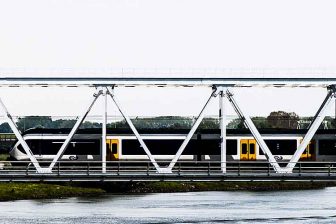Atkins proposes a new UK high speed rail network
A high speed route to regeneration?
Epsom, Surrey – United Kingdom – A new high speed rail network could deliver over £60 billion worth of benefit to the UK, according to multinational design and engineering consultancy Atkins.
The effects would be felt across the UK, from London to the Midlands, the North and Scotland through connecting the major business centres and increasing productivity.
The addition of new high speed lines would not only provide capacity themselves, but also help free up space on existing lines, and encourage more local investment in transport improvements to reduce road congestion in urban areas.
Andy Southern, managing director of Atkins’ transport planning division, said, “It is clear that a high speed rail network should not only be viewed in terms of its benefit to relieving congestion on the rail network. The economic gain could also be extremely significant.
“Our modelling shows the impact would be felt by local communities as well as the business traveller choosing to go by rail rather than air. There is also potential to reduce overall carbon emissions from transport in the UK.”
Building on previous work carried out between 2001 and 2003 for the now-defunct Strategic Rail Authority, the new Atkins report shows high speed routes on the east and west coasts could cost £31 billion to build, but deliver more than twice that in economic benefit in the first 60 years.
The gain would be from staff productivity with significant journey time savings – an hour to Birmingham, three hours to Glasgow. A new High Speed network would also mean companies further converging around major cities served by the new lines. This would lead to greater business to business activity, and a deeper pool of potential employees.
The report has also looked at future capacity needs, assessing the impact of the expected upgrades to the network set out in the government’s High Level Output Specification and recent passenger growth trends. It appears if recent trends continue, with higher numbers of travellers switching to an improving rail network, then capacity could be exhausted quicker than expected – perhaps within a decade.
Atkins thinks a new network could be operational before 2026, but for that to happen the planning process would have to start in the very near future.
U las zojuist één van de gratis premium artikelen
Onbeperkt lezen? Profiteer nu van de introductieaanbieding voor € 10,- per maand.
Bent u al abonnee?



